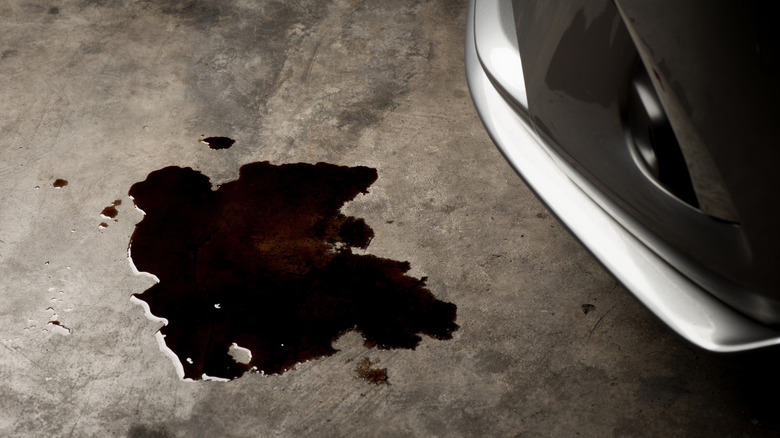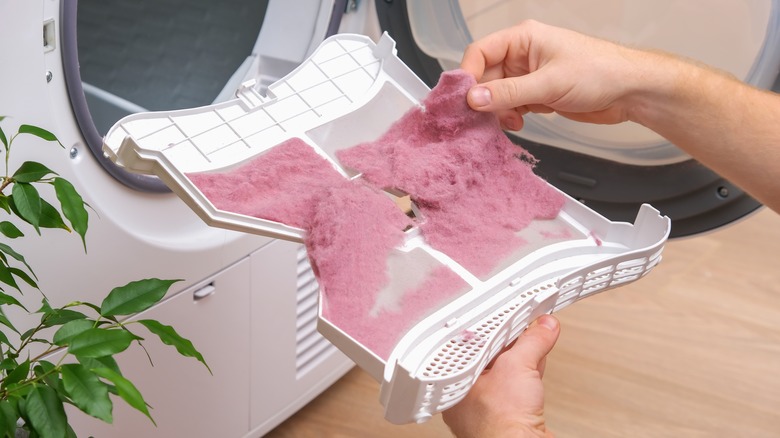The Dryer Lint Hack That Does Wonders For Oil Spills In The Garage
Automobiles require quite a bit of maintenance and oil spills are just one of the messier parts of the routine. The regular occurrence of oil spills doesn't make them any less dangerous. Spillages cause slippages, near-permanent floor stains, and the accumulation of fumes within closed spaces, presenting a fire hazard. Although you can use an oil rag or kitty litter to clean up the garage spill, you don't always need a supermarket trip to stave off danger. Heading to your laundry room will work just as well. Gather the lint from your dryer's trap, spread it over the messy area, and behold the absorbent sorcery at play.
The unassuming waste that you toss into the trash without batting an eyelid after laundry day is worth your while. It has a remarkable absorption capacity that greedily soaks up oil and grease stains, thanks to the tumbled cloth fibers. This makes it an extremely cost-effective and eco-friendly option to kick oil leaks to the curb. So, the next time you empty the dryer's filter, think about why you should consider saving your lint instead. Store it in a dry box away from flames or heat sources, like a resealable plastic bag or coffee box.
How to use dryer lint to clean garage oil spills
Anytime your car leaks oil or your hand slips while topping up your tools, quickly grab the stored dryer lint and lay it over the dirty spot. Apply it thickly if the spillage is particularly severe. Allow the lint to work its magic for 24 hours, and sweep it up afterward. If it doesn't get the stain out completely the first time, repeat the process until it does. There's even some anecdotal evidence around for the dryer lint wiping off the oil film.
The best part of this trick is that dryer lint choices aren't restricted to natural fibers alone. This means it's safe to use lint from any fabric to sop up oil spills, even if your laundry load includes dryer sheets and synthetic materials. Since dryer lint is inflammable and the soaked oil aggravates the situation further, dry it by laying it flat on the ground. Seal it in a plastic container and send it to the landfill. Do not recycle it.
Surprisingly, there's another way to use dryer lint around your garage. You can wipe down excess lubricants and oils as a handy cotton swab replacement. To do so, cover a stick with a huge clump of dryer lint and use it to destroy all evidence of a denting or paint job gone wrong. You can also work it around hard-to-reach gaps where the grease leaks.

